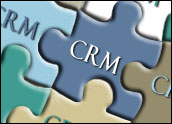
The customer relationship management industry will grow by 14.2 percent this year, Gartner forecasts in a new report, with revenue expected to surpass US$8.9 billion. Last year, the CRM industry registered $7.8 billion in global sales, based on preliminary revenue figures. The market is expected to continue to grow through at least 2012, when revenues are forecast to reach $13.3 billion.
A number of factors are driving CRM growth, said Gartner Research Director Sharon Mertz, author of the report.
Global sales is one — particularly for large corporations in emerging markets. The strengthening grip of the Software as a Service model on the market is another.
Another factor is the boost to productivity from Web 2.0 add-ons that many CRM vendors are bringing to market.
“One thing that struck me this year even more so than usual is that vendor diversification business strategies are really contributing to growth,” Mertz told CRM Buyer.
In other words, there is no one strategy — not even SaaS — to which CRM can attribute its growth trajectory.
“Vendors are doing all kinds of things — working with channel partners in new ways, focusing on emerging market regions, offering a variety of deployment models, and experimenting with new functionality — to bring in revenue,” said Mertz.
Global Growth
The global market is a major ingredient of CRM’s success, though, Mertz continued. “2007 was a tremendously strong year for most vendors, especially those that are growing their businesses outside of the United States.”
North America is the largest market for CRM total software revenue, accounting for $4.3 billion in 2007. That total will reach $7.6 billion in 2012, Gartner expects. Europe, for its part, is expected to exhibit steady growth rising to $3.9 billion in 2012 from $2.6 billion in 2007.
However, the strongest growth in CRM spending is likely to occur in the Asia/Pacific region, where revenue is forecast to grow to $840 million in 2012 from $410 million in 2007, according to the research firm.
Latin America, Eastern Europe and the Middle East and Africa are also expected to see upward growth in CRM spending, particularly in specific industries.
Increasing penetration of CRM solutions in developing economies will make greater contributions to vendor revenue during the next few years, Gartner predicts.
Some overseas vertical markets have proven to be particularly lucrative, Mertz said, such as telecommunications, banking and financial services, and retail.
Russia, while not considered an emerging market, provides a good illustration of the demand for CRM in countries that are quickly building out a capital base.
“A lot of its infrastructure needs to be updated,” Mertz said. “Consider its railroads, for instance. That is an enormous operation as it covers 11 time zones. It will need more infusions of technology to get running.”
India is another country attracting CRM investment, she noted. “Most North American CRM vendors have reported strong growth in India.”
SaaS and Recessionary Forces
By now, the market is familiar with the SaaS success story. Most on-premise vendors have some sort of Web delivery capability as well, because demand for it is so strong, Mertz pointed out.
SaaS will continue to drive growth in this sector, she said — particularly if the economy falls into recession.
It’s questionable, though, whether CRM will take a big hit if growth does start to contract. So far, publicly held vendors are turning in strong earnings. Amdocs, for instance, exceeded its guidance. “I don’t think that trend will necessarily continue this year, but so far so good,” Mertz said.
“If the ‘R’ word does happen, CRM is a place where we will see smart companies continue to spend,” Rebecca Wettemann, vice president of research at Nucleus Research, told CRM Buyer.
“Companies realize that when consumers start to tighten their belts, the one thing they can do to counteract that is make sure they maintain or increase the quality of interactions with their customers,” she explained. “Retention becomes even more critical.”
Gartner does expect to see a slowdown in capital invested into enterprise technology this year, Mertz added.
The CRM growth factor that’s most difficult to quantify is the one that has had the biggest impact on spending — at least, according to Wettemann: new innovation and Web 2.0 technologies.
“There is an increased focus on CRM as a way to increase productivity,” she said, “so applications like presence monitoring, next-generation content management — applications that automatically generate a proposal — and social networking capabilities all are attracting attention by buyers.”
























































